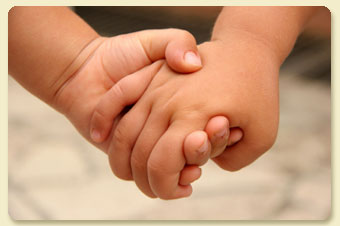 We’ve all been near children to recognize the scenario. One child begins to complain, then cry or wait, and, like a siren causing a dog to harmonize with its own howl, the lament sets off another child, nearby. It’s never clear whether the second child is complaining about the noise or feeling the other child’s pain so intensely it has to weep. Dr. Perry Klass sketched this scene in The New York Times and then pondered different ways to interpret it. What I found interesting in the analysis was the distinction between empathy and what Klass called “prosocial behavior.” It’s built on the ability to feel the distress of other people, but it goes well beyond feeling. If you buy a pair of shoes for a homeless man or leap down onto a subway track to save someone who has fallen in the path of a train, empathy made it possible. But it took more than empathy.
We’ve all been near children to recognize the scenario. One child begins to complain, then cry or wait, and, like a siren causing a dog to harmonize with its own howl, the lament sets off another child, nearby. It’s never clear whether the second child is complaining about the noise or feeling the other child’s pain so intensely it has to weep. Dr. Perry Klass sketched this scene in The New York Times and then pondered different ways to interpret it. What I found interesting in the analysis was the distinction between empathy and what Klass called “prosocial behavior.” It’s built on the ability to feel the distress of other people, but it goes well beyond feeling. If you buy a pair of shoes for a homeless man or leap down onto a subway track to save someone who has fallen in the path of a train, empathy made it possible. But it took more than empathy.
Klass said there are ways to encourage prosocial behavior and he cites the work of Nancy Eisenberg, a psychology professor at Arizona State University who has studied voluntary behavior intended to benefit someone else. She points out that prosocial grows from a matrix of factors, with empathy as a kind of catalyst that enables them all to coordinate into beneficial choices. Those factors are: the ability to see distress in others; a strong sense of one’s own identity and feelings; a skill at regulating empathy so that it isn’t overwhelming (an ability to identify with the suffering of others without losing your own sense of autonomy); and a way to understand and feel the value of helping other human beings. That last one might be simplified into simply having a philosophy or sense of purpose in life founded in altruism and compassion.
Klass points out that research hasn’t isolated a particular gene for empathy or altruism. Its origins can be found in learned behavior: modeling good behavior in a family, and making altruistic action a goal in organizational life. It can spread through example: the more people make choices grounded in empathy, the more it will spread. One interesting note is that offering selfish incentives for generosity short-circuits whatever reward system the brain has worked out for altruistic choices. If you try to create selfish motivations for unselfish behavior, it doesn’t pay off, as it were.
To bring the subject back to children, the best way to encourage prosocial behavior in kids is simply to create opportunities for it—not to set up a system of artificial rewards. It may be pleasant to learn that the human brain is built, to some degree, for altruism. It brings pleasure to the same centers that generate happiness when a person wins money. Winning money and giving it away will generate the same kind of gratification, oddly enough. As with all things, Klass points out, “empathy, sympathy, compassion, kindness and charity begin at home, and very early.”